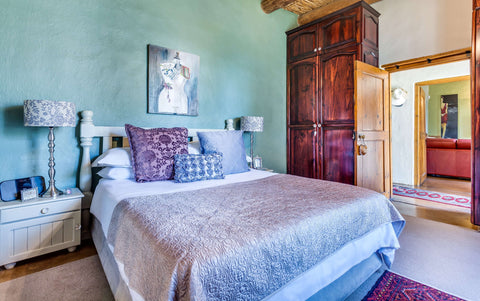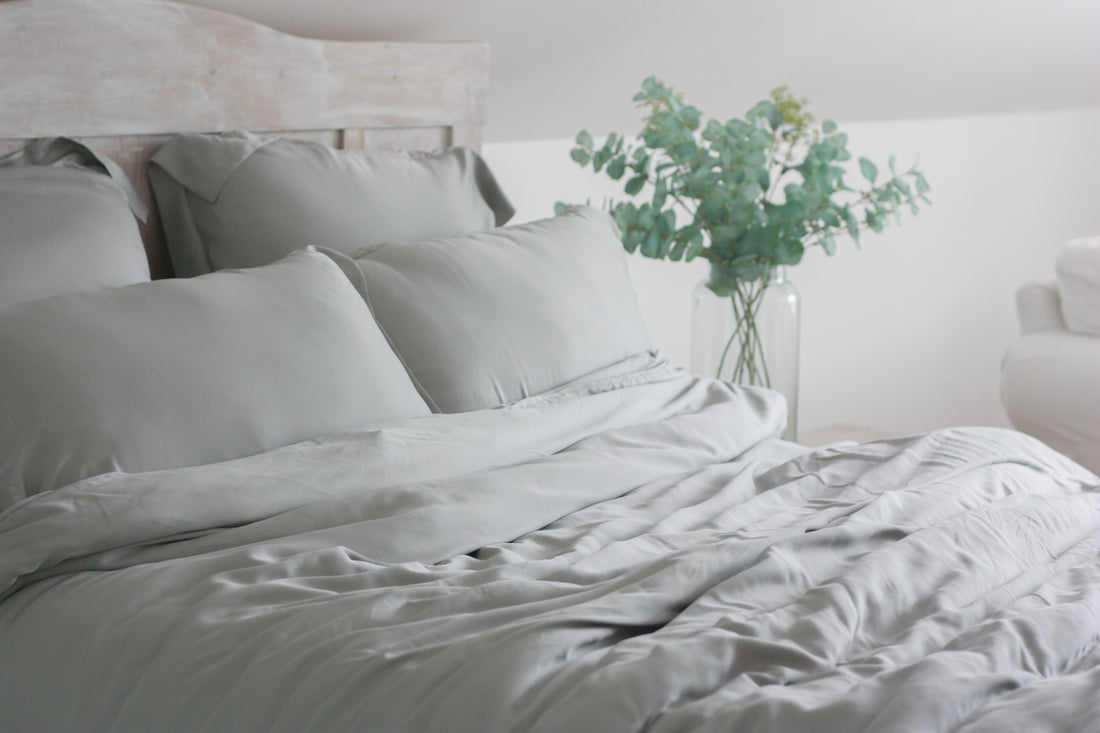Many of the big names in the fashion industry have begun manufacturing and selling bedding sets. This isn't necessarily something new, and it can be tempting to buy into the brand you know and love already.
But is it best to keep in mind that this has possibly been designed by someone with a fashion background, rather than a sleep background? And as such, is the price tag that often accompanies fancy bedding worth it?
Designer Bedding: Key Questions & Information
- Why is Designer Bedding is Popular?
- Beneath the Label - Downsides of the Fashion Industry
- Are designer bedding fabrics better quality?
- Changing Consumer Priorities
- Modern Consumer Priorities
- How to Shop for Sustainable Bedding?
WHY IS DESIGNER BEDDING POPULAR?
A designer label can hold the promise of many qualities that consumers are looking for in their bedding. For many people, a designer label automatically signals a higher quality product than if it was from a lesser known brand, even if the opposite were true.
Choosing a designer bedding sets seems like a safe bet, particularly for customers who aren’t clued up on material and production details. Shoppers that aren’t sure which fabrics provide the highest quality are less likely to check the labels for specifics about fabric content or country of manufacture. Instead, they will choose the designer option as the label and marketing offer a vague promise of quality. It does not necessarily equate to quality bedding.

Designer labels have a significant psychological impact on consumers. Similar to buying expensive cars, diamonds or watches, designer homeware is bought to elevate one’s social status, compensate for low self-esteem or to become more attractive in the mating market.
Designer brands not only understand this, they use it. The high price tag that accompanies designer products is not simply for the presumably high quality and long-lasting product. When buying designer, you are paying for the privilege of flaunting the label.
BENEATH THE LABEL - DOWNSIDES OF THE FASHION INDUSTRY
Despite the cost of expensive bedding, a designer label doesn’t guarantee high quality fabrics or ethical methods of production. Historically, the fashion industry and the myriad of designer brands involved tend to overlook ethical values and have only recently begun to move away from using fur in their products and using size zero models.
Some major problems still exist in the fashion industry however, including its shocking impact on the environment and the unfair exploitation of garment manufacturers. It is the responsibility of individual designers to take a stand against these practices as well as the responsibility of consumers to make ethical buying choices.
Designer clothing and products are not considered to be fast fashion. However, they are the reason fast fashion exists. The mass-production of cheap clothing is a response to the fashion industry’s quickly evolving definition of what is considered ‘on trend’. Having garments and products that are only fashionable for a season sets a damaging precedent that products are transient and can be easily thrown away and replaced.
These ideals have infiltrated almost all markets, including the bedding and bed sheets industry. Consumers may be inclined to buy cheaper, lower quality designer inspired bedding in a style that imitates designer brands, only to throw it away and replace it within a year.
Obviously, this is disastrous for the climate and changes need to be made to move towards more sustainable consumerism. It is important for people to look into sustainable buying options and choosing ethically made, yet luxurious, fabrics such as Tencel™ for their bedding.
Fast fashion is notoriously bad for garment manufacturers who are overwhelmingly underpaid and often working in sweatshops. It is important to remember, however, that designer brands are not innocent of these production methods. Despite being a multi-billion-dollar industry, many designer brands still use sweatshops for the manufacture of their products.
ARE DESIGNER BEDDING FABRICS BETTER QUALITY?
It is presumed that expensive designer bedding products would be made using high-quality materials and fabrics. While many designer brands do use high quality materials such as silk or Egyptian cotton, the mere existence of a label does not guarantee it.
When shopping for designer bedding, it is important for consumers to not assume high quality and to instead look carefully at the labels. Unless the brand is explicitly marketing luxurious and high-quality materials used in the fabrics of their bedding, it is likely the fabric consists of lower grade cottons or synthetic material blends.
If a designer brand does guarantee the use of high-quality fabrics in their bedding, it is still impossible to know from the label information whether the bedding product has been produced in a sustainably farmed manner or whether it has been made by exploited garment manufacturers in sweatshops.
Alternatively, consumers can shake off the need for a designer label and instead shop based on the production methods, quality and sustainability of the fabric.
CHANGING CONSUMER PRIORITIES
The fashion industry continues to grow and generate millions of dollars per year. Clearly, buying and owning designer brands remains important to many people. However, there are a growing number of consumers that care where their products are being sourced and how their products are being made.
Younger generations in particular are less likely to implicitly trust designer brands and are more likely to spend money on products they believe are sustainable. Designer brands and ethically made bedding products would have similar pricing positions in the market but for different reasons. Designer brands can charge more for the label whereas ethical products have longer and more expensive production methods.
When people are willing to spend a certain amount of money on bedding, they will choose the sustainable option that has a more positive environmental and social impact. With the increasing understanding of environmental impacts within the fashion industry, more people are expected to switch to sustainable buying choices.
HOW TO SHOP FOR SUSTAINABLE BEDDING?
Despite supposedly being at the forefront of trends, many powerhouses of the fashion industry are still clinging to more convenient, profit churning methods of the past, failing to catch up with newer concerns for environment and the demand for better treatment of garment manufacturers.
Companies with unethical and unsustainable values are now being held accountable for their choices. Increasing numbers of customers are turning to newer brands and smaller companies that respect both the environment and employee rights.
Ethical bedding choices are increasingly available, and it is absolutely possible to make buying decisions and buy beautiful bedding that matches both your budget and your moral values, particularly when swapping from designer brands to sustainable choices.
When first moving away from popular brands and high street fashion, there can be confusion over where to look for bedding products and how you might know they are more ethical buying choices.

Shop here for our Ethical Bedsheet Set
To avoid the bad practices of the fast-fashion industry when shopping for bedding, it is best to focus searches around higher-quality fabrics that aren’t mass produced. Luxury fabric industries like organic cotton and silk are better for the environment but not necessarily better for the farmers that produce the raw materials or for the garment manufacturers.
For the optimal sustainable choice, newer fabrics such as Tencel™ offer luxurious long-lasting bed sheets that are guaranteed to have minimal environmental impact and are free from exploitation of labour.
Maybe it's time to reconsider the quality of designer bedding? Learn more about bamboo bedding and the alternatives.

















